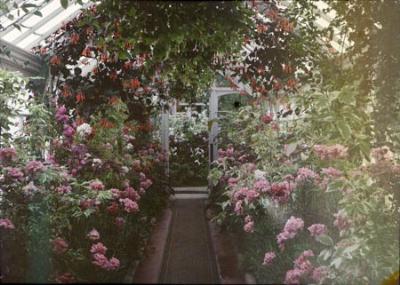Luton Hoo Walled Garden

Autochromes were the first practical and commercially successful process for making colour photographs. Available from 1907 until the 1930s the process proved popular as pictures could be taken using existing cameras. In spite of this popularity I had never seen one until the archives service undertook the scanning of thirteen Autochromes for the Luton Hoo Estate.
The images, taken in about 1913, include Lady Werhner in the south garden and views of the rose and herbaceous borders in the kitchen garden. The latter are particularly important to the estate, providing valuable evidence for the Walled Garden Project, which is currently piecing together the garden's history with a view to restoring the glass houses (see the 1913 image above) and re-creating the historical planting of the period just before the First World War.
Autochromes are rather difficult to view. The unique image is on a glass plate and appears rather dark even when held up to a light. The Luton Autochromes all came in individual diascope cases (see below). A frame holds the plate allowing light from above to pass through the plate and strike a mirror inside. The viewer looks into the diascope and sees the reflection of the illuminated Autochrome (see right). The possibility of breaking the glass plate and the difficulties in viewing made scanning and printing out the best option for making these images available to the project researchers.
